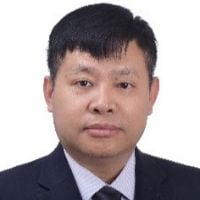Stem Cell, Differentiation, Regeneration and Diseases
A special issue of Cells (ISSN 2073-4409). This special issue belongs to the section "Stem Cells".
Deadline for manuscript submissions: 31 July 2024 | Viewed by 2272
Special Issue Editors
Interests: lung stem cell; pulmonary fibrosis; lung repair; drug discovery
Interests: stem cell; induced pluripotent stem cell (iPSC); brain organoid; disease modeling; regenerative medicine; immune therapy; drug discovery
Interests: neural stem cell differentiation; glial differentiation; epigenetic regulation of neurogenesis; neurodevelopmental disorders; neural regeneration
Special Issue Information
Dear Colleagues,
Stem cells have the remarkable potential to develop into various cell types, offering hope for treating and even curing many devastating diseases. Differentiation, the process by which stem cells become specialized cells, is a critical step in harnessing the potential of stem cells for therapeutic purposes. Illustrating the mechanisms and factors that regulate stem cell differentiation will help to better control and direct this process. Tissue regeneration is a rapidly growing field that aims to replace or repair damaged tissues and organs, using the potential of stem cells to regenerate various tissues, such as the heart, liver, kidneys, and nervous system. Stem cell research also help us to understand and treat human diseases. This includes studies on the role of stem cells in the development and progression of diseases, such as cancer, diabetes, and neurodegenerative disorders, as well as investigations into the potential of stem cell-based therapies for treating these conditions.
This Special Issue aims to assemble the original articles and reviews on stem-cell-related research. We look forward to your contributions and hope that it will provide a valuable resource for the stem cell research community, driving the field forward and fostering the development of new therapies.
Dr. Guoying Yu
Dr. Guoqiang Sun
Dr. Jiancheng Liu
Guest Editors
Manuscript Submission Information
Manuscripts should be submitted online at www.mdpi.com by registering and logging in to this website. Once you are registered, click here to go to the submission form. Manuscripts can be submitted until the deadline. All submissions that pass pre-check are peer-reviewed. Accepted papers will be published continuously in the journal (as soon as accepted) and will be listed together on the special issue website. Research articles, review articles as well as short communications are invited. For planned papers, a title and short abstract (about 100 words) can be sent to the Editorial Office for announcement on this website.
Submitted manuscripts should not have been published previously, nor be under consideration for publication elsewhere (except conference proceedings papers). All manuscripts are thoroughly refereed through a single-blind peer-review process. A guide for authors and other relevant information for submission of manuscripts is available on the Instructions for Authors page. Cells is an international peer-reviewed open access semimonthly journal published by MDPI.
Please visit the Instructions for Authors page before submitting a manuscript. The Article Processing Charge (APC) for publication in this open access journal is 2700 CHF (Swiss Francs). Submitted papers should be well formatted and use good English. Authors may use MDPI's English editing service prior to publication or during author revisions.
Keywords
- stem cell
- development
- differentiation
- tissue regeneration
- organoid
- disease modeling
- stem cell therapy
- cancer








